New tool may unveil inhabitable worlds
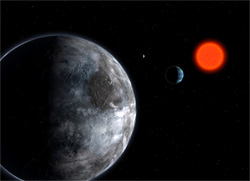 SPIRou, a near-infrared spectropolarimeter, will also investigate the birth of Sun-like stars and their planets
SPIRou, a near-infrared spectropolarimeter, will also investigate the birth of Sun-like stars and their planets
Funding for SPIRou, a spectropolarimeter and a high-precision velocimeter optimized for both the detection of habitable Earth twins orbiting around nearby red dwarf stars and the study of forming Sun-like stars and their planets was confirmed today by the Canada-France-Hawaii Telescope (CFHT) observatory. University of Montreal and France’s Institut de Planétologie et d’Astrophysique de Grenoble lead the international consortium that manages the SPIRou project. “SPIRou is a spectropolarimeter – it decomposes light from stars into elementary colors and vibration modes. It is also a high-precision velocimeter, capable of recording the tiny motions of a star that probe the presence of an orbiting planet,” explained SPIRou premier investigator René Doyon, a University of Montreal professor and director of the Mont-Mégantic Observatory. “It’s like a radar speed gun, but rather than detecting excess or unusual velocity of an observed star, it finds the regular and periodic variations of its velocity.” The construction of SPIRou will start in 2014, for installation in Toulouse, France, in 2016 and the first light to result from the new tool will be perceived at the CFH telescope in 2017.
SPIRou will be able to hunt Earth-like planets orbiting in the habitable zones of nearby red-dwarf stars. The atmospheres of these Earth “twins” will then be scrutinized for the potential presence of water and other life-related molecules with instruments such as the James Webb Space Telescope that will be launched in 2018. “How do stars and planets come to life? How do magnetic fields impact their birth? Is our Earth one of the few planets in the Milky Way capable of hosting liquid water on its surface, or is it just one in a multitude? SPIRou, CFH Telescope’s next-generation instrument, will investigate these astronomer-intriguing major questions over the coming decade,” Doyon said. Doyon is in fact also the premier investigator of the FGS/NIRISS instrument that is being installed on the Webb telescope, an instrument dedicated to the search and the study of exoplanets and their atmosphere.
SPIRou: a major technical challenge.
To optimally observe celestial bodies as cool as red-dwarf stars – whose surface temperatures barely match that of standard halogen bulbs, SPIRou must work in the infrared, implying in practice that the heart of the instrument, the high-resolution spectrograph, must be installed within a cryogenic dewar and cooled down to the temperature of liquid nitrogen (-200°C). This is to prevent the ambient thermal radiation from outshining the dim light from the red dwarf stars that SPIRou collects and deciphers. Moreover, the temperature within the cryogenic dewar will have to be exceptionally stable, to within a few thousandth of a degree, to enable SPIRou to detect the nanometric motions of stellar spectra that will reveal the existence of habitable Earth-like planets. Université de Montréal researchers have met this challenge, having designed SPIRou’s camera and infrared detector. Their colleagues at Université Laval contributed expertise in optical design.
SPIRou will be installed at the CFH Telescope, a sentinel of the starry skies atop the 4,200 m Maunea Kea extinct volcano on Hawaii’s Big Island. Although the 3.6 m telescope boasts top-grade instrumentation and is located in one of the best astronomical sites in the world, competition is fierce and so the observatory has adopted an ambitious science policy in order to continuously innovate and remain in a forefront position amongst the world’s giant telescopes. SPIRou is one of the key instruments that should guarantee the future of the telescope over the next decade. In addition to the commitments that the CFHT has announced today, the SPIRou construction budget includes the support a large and international consortium of universities and research laboratories.
Source :
CRAQ.
René Doyon, University of Montreal and Mont-Megantic Observatory
Tel : +1-514-343-6111 ext. 3204 | doyon@astro.umontreal.ca
Contact at University of Montreal Central Communications
William Raillant-Clark
+1-514-343-7593 | w.raillant-clark@umontreal.ca
Notes
The University of Montreal is officially known as Université de Montréal.
The SPIRou research and funding partners are:
Brazil: Laboratório Nacional de Astrofísica in Itajuba, Universidade Federal do Rio Grande do Norte (Natal), Universidade Federal de Minas Gerais (Belo Horizonte)
Canada: Université de Montréal, Observatoire du Mont-Mégantic, Université Laval, National Research Council (Victoria)
France: Centre National de la Recherche Scientifique, Ministère de l’Enseignement Supérieur et de la Recherche, Université Paul Sabatier, Observatoire Midi-Pyrénées, Institut de Recherche en Astrophysique et Planétologie, Région Midi-Pyrénées, Université Joseph Fourier, Observatoire des Sciences de l’Univers de Grenoble, Institut de Planétologie et d’Astrophysique de Grenoble, Institut d’Astrophysique de Paris, Observatoire de Paris, Laboratoire d’Etudes Spatiales et d’Instrumentation en Astrophysique, Laboratoire d’Etudes du Rayonnement et de la Matière en Astrophysique, Laboratoire Univers et Théories, Institut de Mécanique Céleste et de Calcul des Ephémérides, Service d’Astrophysique / Laboratoire AIM du Commissariat à l’Energie Atomique, Institut d’Astrophysique Spatiale, Laboratoire Atmosphères, Milieux, Observations Spatiales, Région Ile de France, Université Aix-Marseille, the Pythéas Institute, Laboratoire d’Astrophysique de Marseille, Observatoire de Haute Provence
Portugal: Centro de Astrofísica da Universidade do Porto
Republic of China: Academia Sinica, Institute of Astronomy and Astrophysics (Taipei)
Switzerland: Observatoire de Genève
United States: Canada-France Hawaii Telescope
Images :
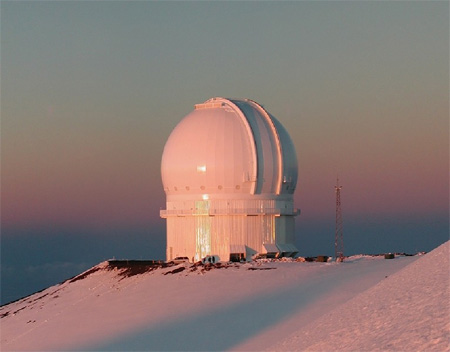
The CFH Telescope atop Mauna Kea on the Big Island of Hawaii
(Credit JC Cuillandre, CFHT)
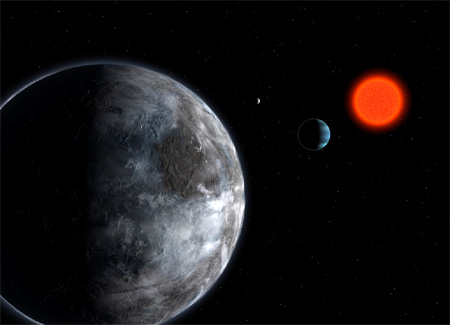
An artist view of the likely-habitable planet orbiting
the red dwarf star Gl 581 (Credit ESO)
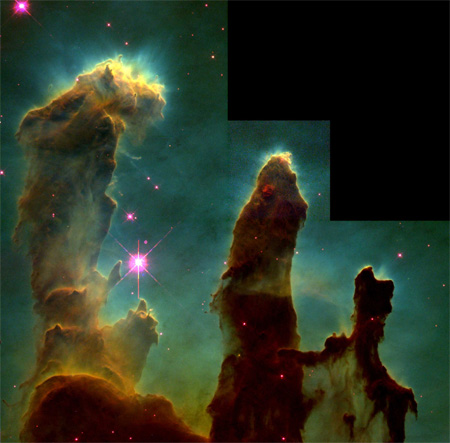
The birth of new worlds in the Eagle Nebula (Credit HST / NASA)
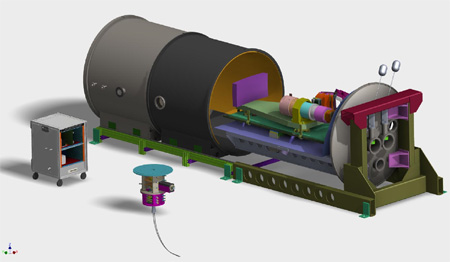
A CAD view of the main parts of SPIRou (Credit Université de Montréal)
